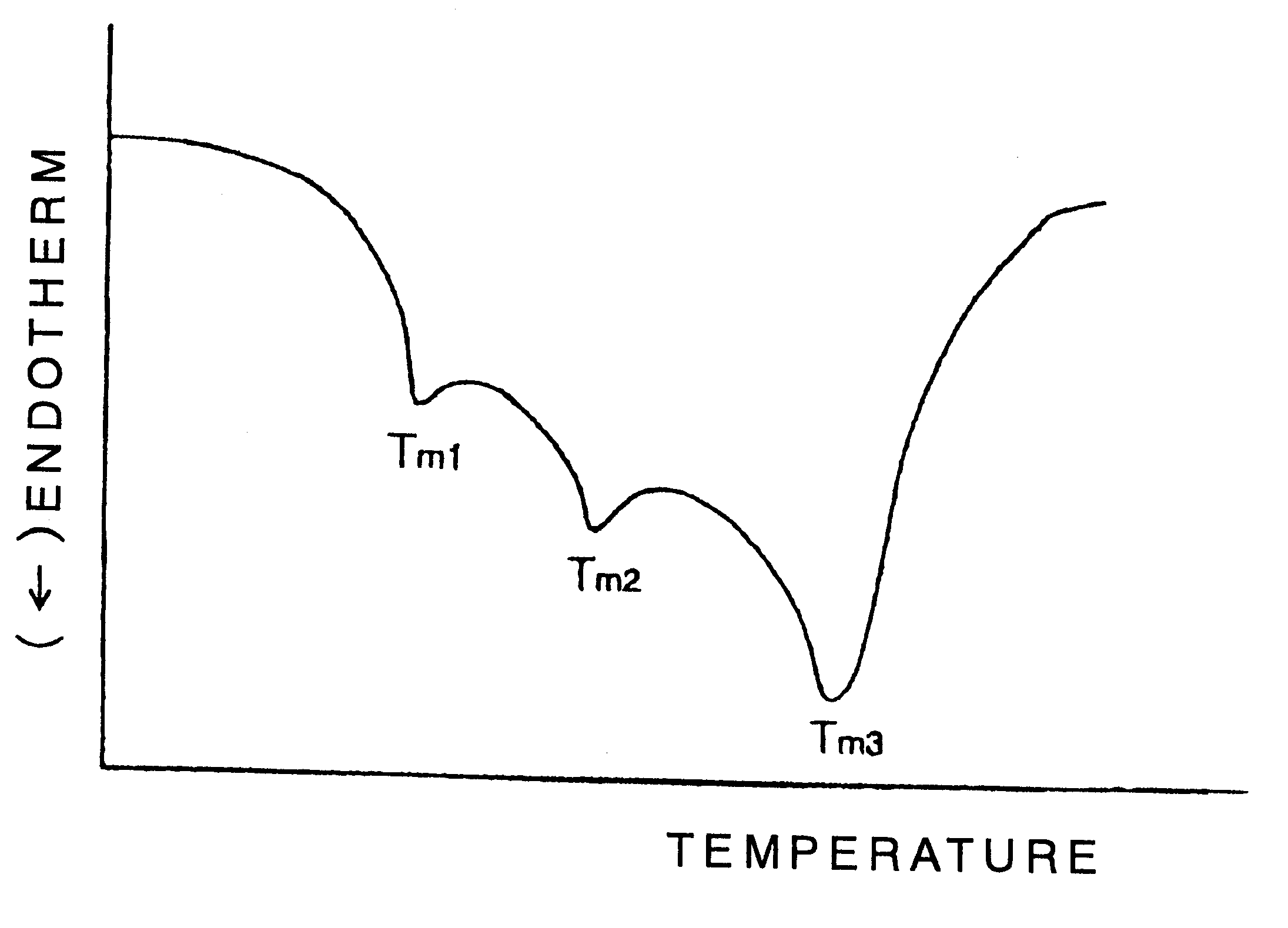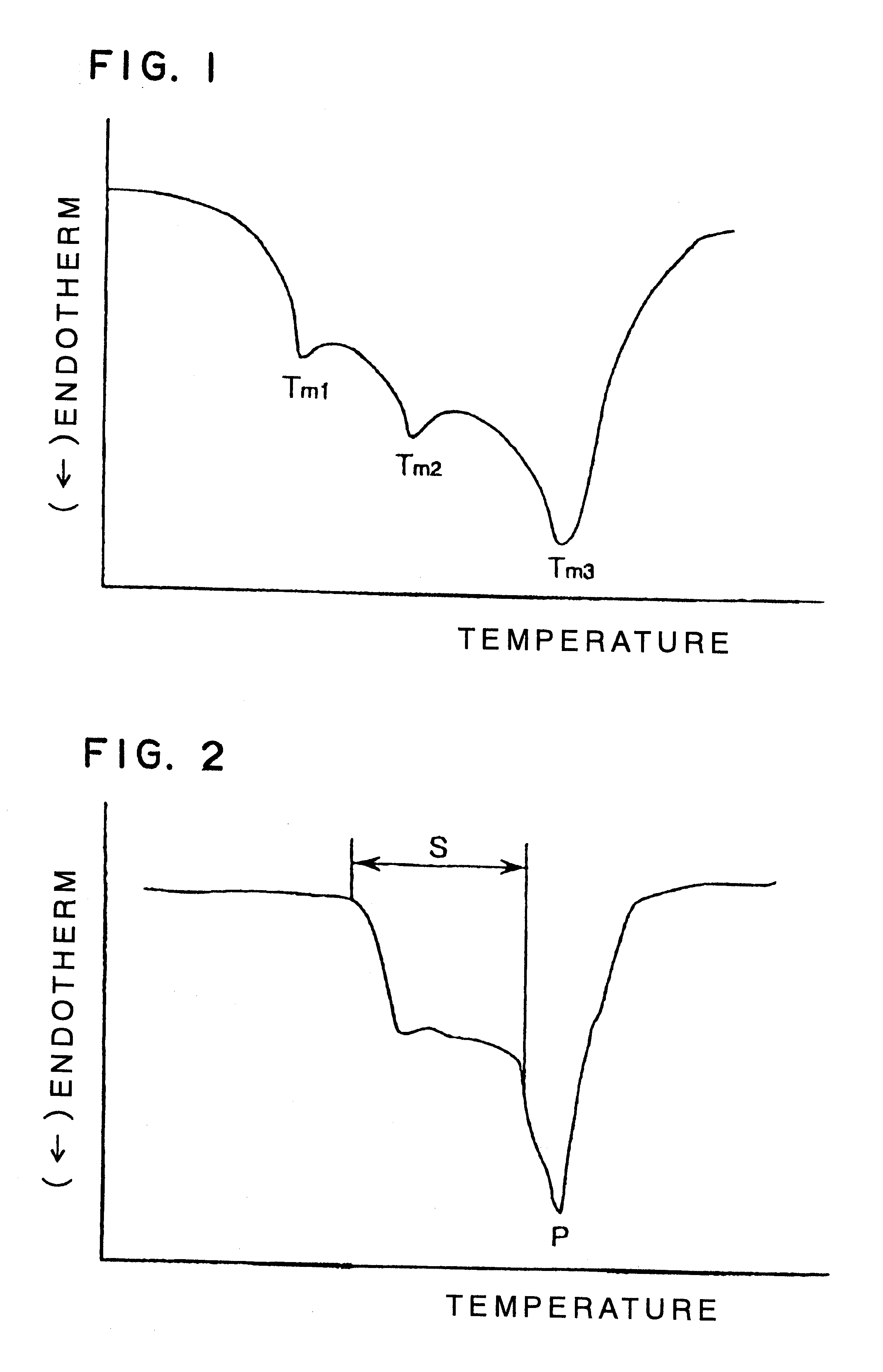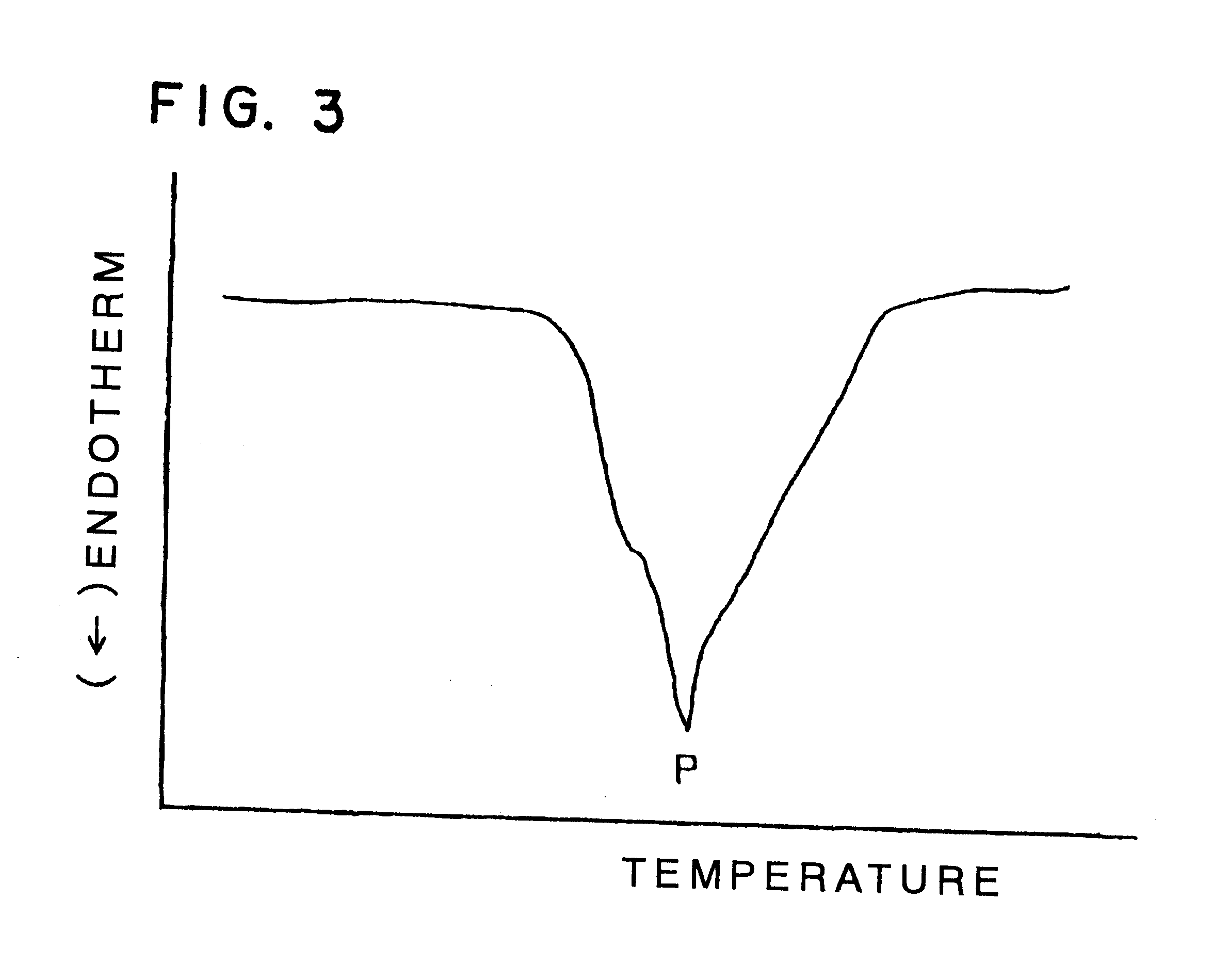Composite-fiber nonwoven fabric
a technology of composite fibers and nonwoven fabrics, applied in the direction of yarn, filament/thread forming, transportation and packaging, etc., can solve the problems of insufficient inability to achieve adequate softness of nonwoven fabrics, and difficulty in spinning polyethylene fibers
- Summary
- Abstract
- Description
- Claims
- Application Information
AI Technical Summary
Problems solved by technology
Method used
Image
Examples
example 1
A polyethylene-based resin mixture (the physical properties of the mixture are shown in Table 1) consisting of 70 parts by weight of polyethylene (HDPE, comonomer: 1-butene) [resin 1] having a density (measured in accordance with ASTM D1050, hereinafter the same) of 0.965 g / cm.sup.3 and a melting point of 130.degree. C. and 30 parts by weight of LLDPE (comonomer: 4-methyl-1-pentene) [resin 2] having a density of 0.915 g / cm.sup.3 and a melting point of 115.degree. C., and polypropylene having ethylene content of 0.4 mol % and a melting point of 165.degree. C. were independently subjected to melt kneading by extruder. Then each molten was extruded through a spinneret with bi-component fiber spinning nozzles constructed in such a manner as to extrude the molten to form a core-sheath structure, so that the molten matter was subjected to conjugate spinning to form a concentric core-sheath-type conjugate fibers composed of a core portion comprised of the polypropylene and a sheath portion...
example 2
A conjugate fiber nonwoven fabric was obtained in the same manner as in the example 1, except that the blend proportions of polyethylene having a melting point of 130.degree. C. [resin 1] and LLDPE having a melting point of 115.degree. C. [resin 2] to the polyethylene-based resin mixture, which consisted of the above two types resins, were 60 parts by weight and 40 parts by weight (the physical properties of the mixture are shown in Table 1), respectively, and the surface temperature of the embossing roll was 119.degree. C.
For the core-sheath-type conjugate fibers forming the nonwoven fabric obtained as described above, its fineness was 3.0 deniers and the component ratio by weight of polyethylene-based resin mixture to polypropylene was 30 / 70. Evaluation results for this nonwoven fabric are shown in Table 1.
example 3
A conjugate fiber nonwoven fabric was obtained in the same manner as in the example 1, except that the blend proportions of polyethylene having a melting point of 130.degree. C. [resin 1] and LLDPE having a melting point of 115.degree. C. [resin 2] to the polyethylene-based resin mixture, which consisted of the above two types resins, were 50 parts by weight and 50 parts by weight (the physical properties of the mixture are shown in Table 1), respectively, and the surface temperature of the embossing roll was 117.degree. C.
For the core-sheath-type conjugate fibers forming the nonwoven fabric obtained as described above, its fineness was 3.0 deniers and the component ratio by weight of polyethylene-based resin mixture to polypropylene was 30 / 70. Evaluation results for this nonwoven fabric are shown in Table 1.
PUM
| Property | Measurement | Unit |
|---|---|---|
| Temperature | aaaaa | aaaaa |
| Temperature | aaaaa | aaaaa |
| Temperature | aaaaa | aaaaa |
Abstract
Description
Claims
Application Information
 Login to View More
Login to View More - R&D
- Intellectual Property
- Life Sciences
- Materials
- Tech Scout
- Unparalleled Data Quality
- Higher Quality Content
- 60% Fewer Hallucinations
Browse by: Latest US Patents, China's latest patents, Technical Efficacy Thesaurus, Application Domain, Technology Topic, Popular Technical Reports.
© 2025 PatSnap. All rights reserved.Legal|Privacy policy|Modern Slavery Act Transparency Statement|Sitemap|About US| Contact US: help@patsnap.com



